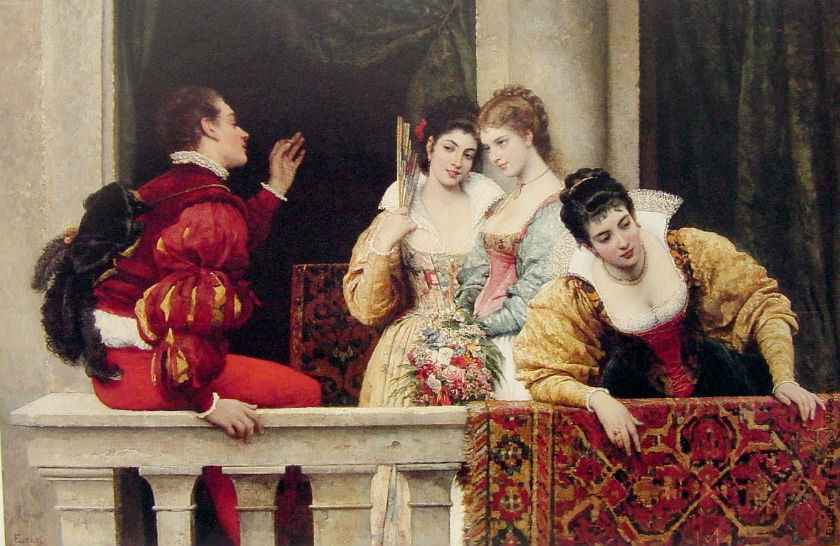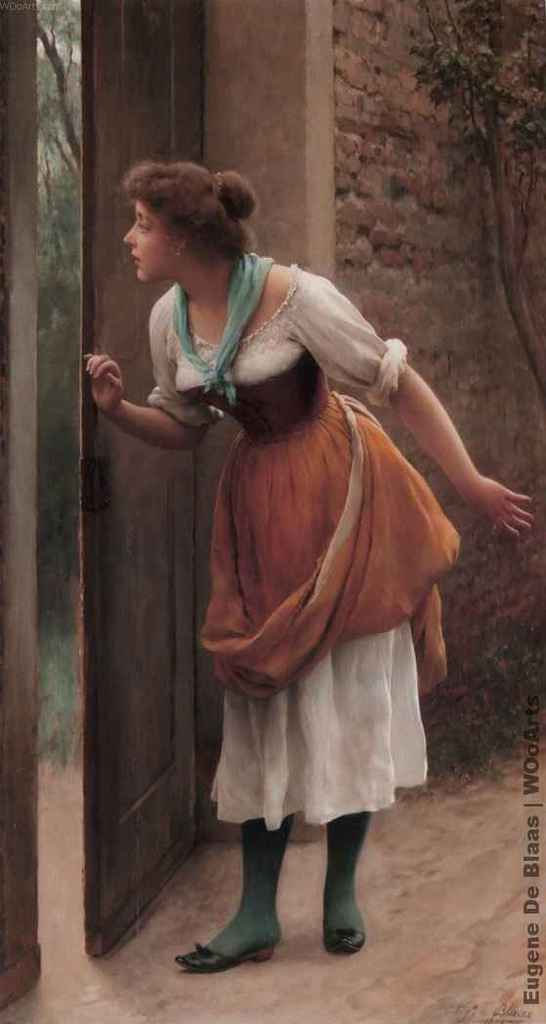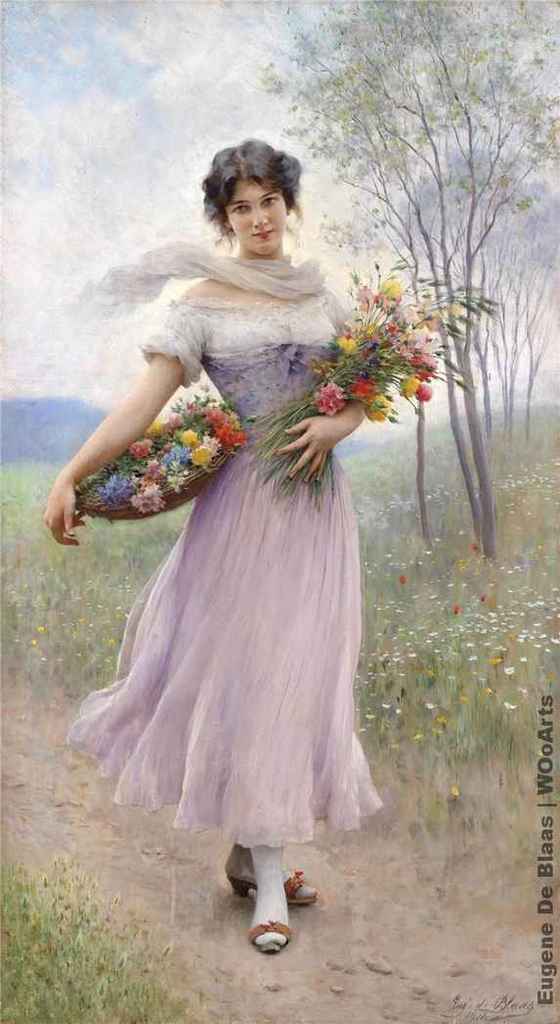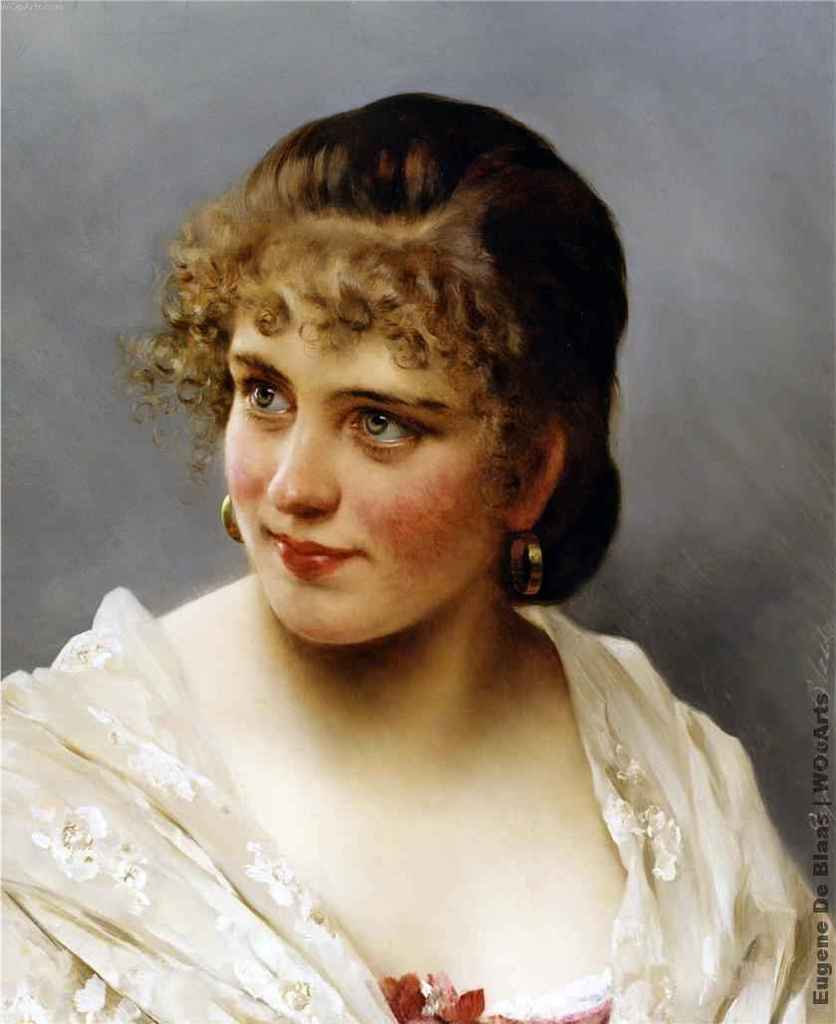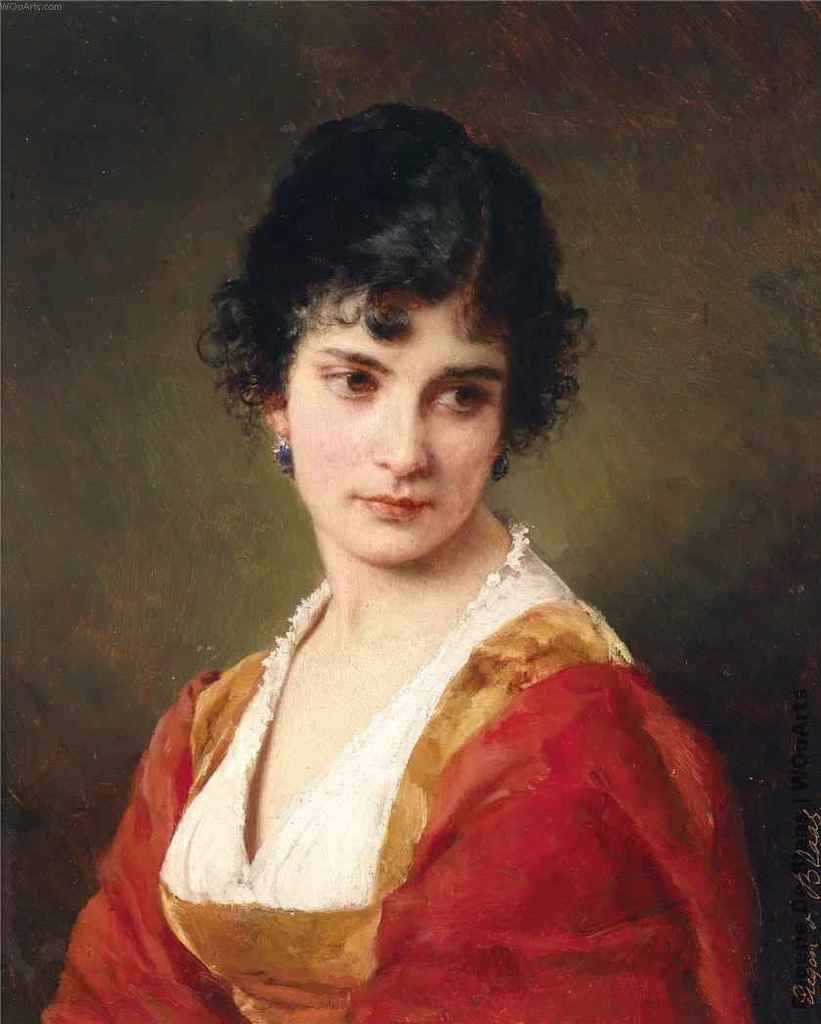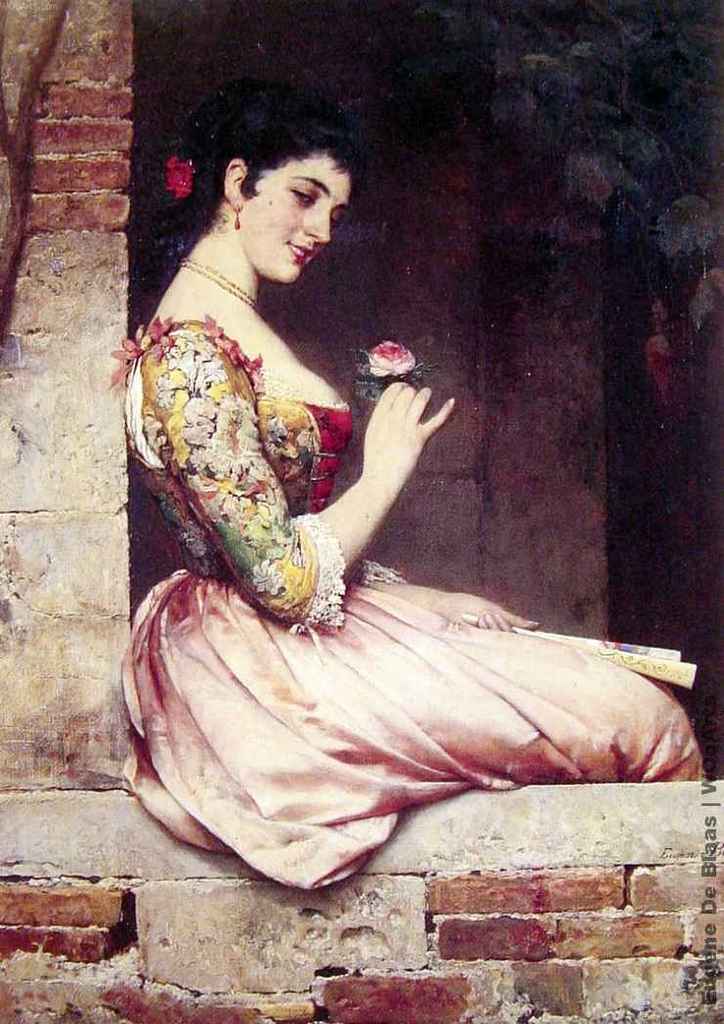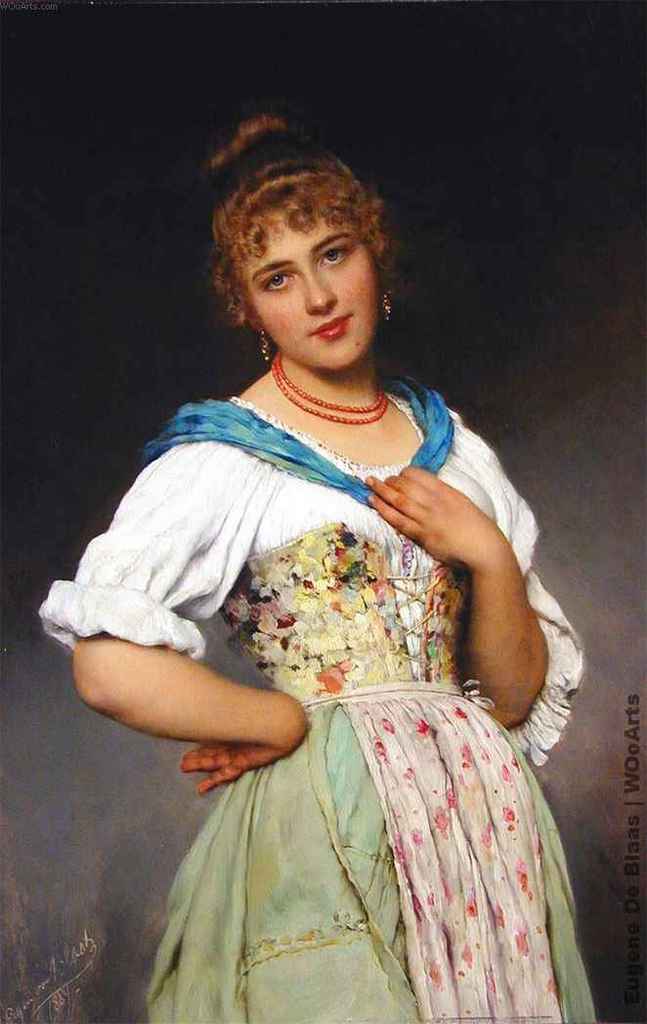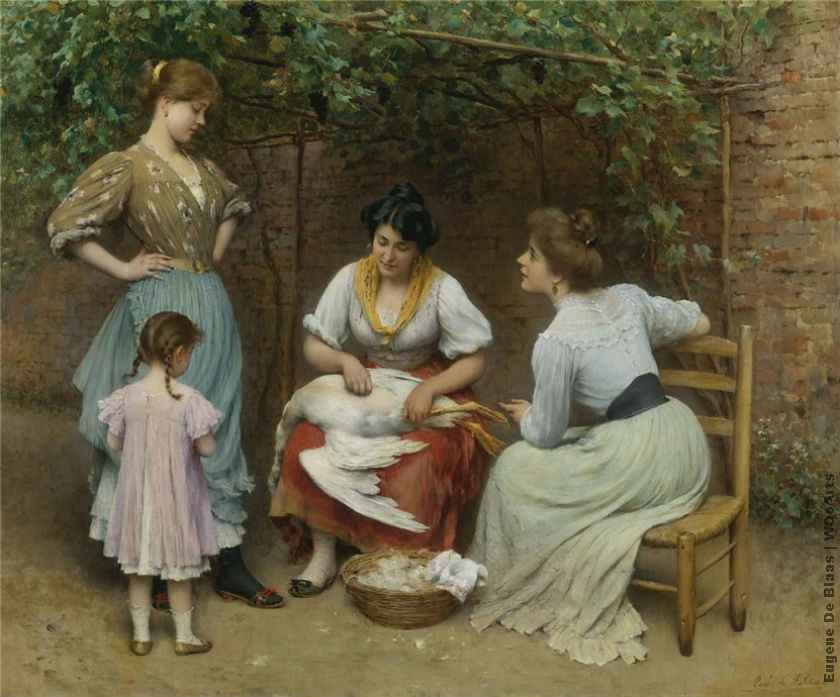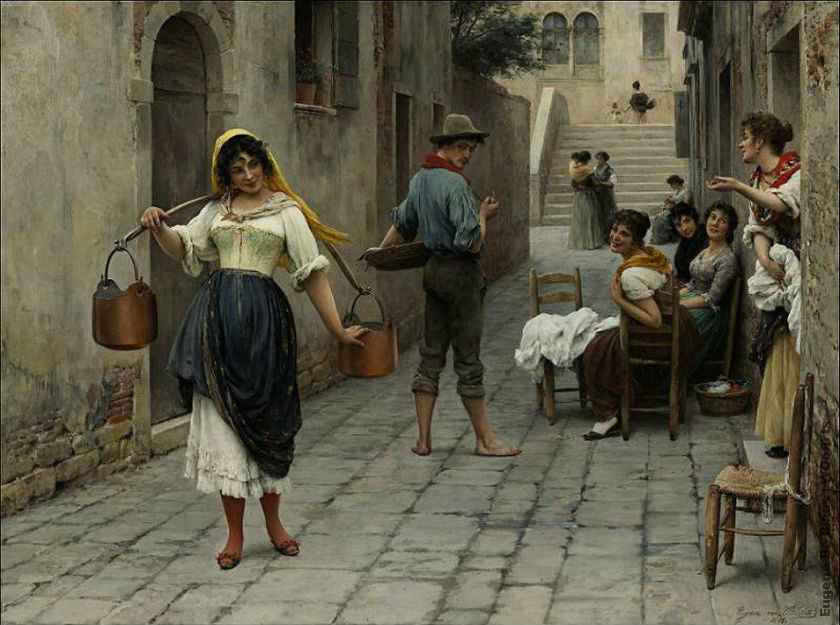Life and career:
He was born at Albano, near Rome, to Austrian parents. His father Karl, also a painter, was his teacher. The family moved to Venice when Karl became Professor at the Academy of Venice. He often painted scenes in Venice, but also portraits and religious paintings.
Works:
Among his works are La forma nuziale in sacrestia; La tombola in Campielo a Venezia; Una scena di burattini in un educanciatu; and La Ninetta. The art critic Luigi Chirtani, when the painting was displayed at the Mostra Nazionale di Venezia, described it as Beautiful, flattering, pretty, caressed, cleaned, polished, laundress in a painting by Mr. Blaas, the favorite portraitist of great Venetian aristocrats, dressed in gala satins, shining jewelry, hairstyles of the rich.
His colorful and rather theatrical period images of Venetian society, e.g. On the Balcony (1877; Private Collection), were quite different compared to delicate pastels and etchings of the courtyards, balcony and canals of modern Venice.
Eugene de Blaas’ paintings were exhibited at the Royal Academy, Fine Art Society, New Gallery and Arthur Tooth and Sons Gallery in London, and also at the Walker Art Gallery in Liverpool.
Eugene von Blaas was born July 24, 1843 at Albano, near Rome, to Austrian parents. His career was enriched by a talented and artistic family. His father, Karl (1815-1894), was one of the most notable portrait painters of Roman society, a successful history, portrait and fresco painter of the late Biedermeier period.
He became teacher to Eugene and his brother Julius (b.1845), an artist in his own right who specialized in animal and military scenes. Karl eventually took a position as a professor at the Academies in Vienna and Venice, then part of the Austro-Hungarian Empire. It was in Venice that Eugene von Blaas established himself as the leading painter of Venetian genre.
Venice had been an essential stop on the Grand Tour since the early eighteenth century. Past visitors had returned home with views and portraits and the late-nineteenth century visitor wanted more.
The affluent Venetian visitor wanted human interest, a sense of life by the canals and campos of the city, and as a result a school of artists developed to supply this market. Native Italian artists like Antonio Paolettu, Antonio Rotta and von Blaas, as well as Englishmen such as Luke Fildes and William Logsdail depicted the lives of Venetian fisher folk, gondoliers and Venetian beauties.
Between 1875 and 1891 von Blaas exhibited twelve works at the Royal Academy in London. By 1885 the London art dealer Arthur Tooth and Son represented von Blaas for a short time before he moved to the rival dealer T. MacLean in 1886.
Works by Eugene von Blaas can be found in many public and private collections throughout the world, most notably in institutions in Melbourne, Sydney, Vienna, Leicester, Nottingham, Sheffield, and the Art Gallery of New South Wales.
More:
It was in Venice that Eugene de Blaas established himself as the leading painter of Venetian genre. The golden Italian climate and the magnificent old stone facades had made Venice an essential stop on the Grand Tour since the early eighteenth century. Past visitors had returned home with views and portraits; the late nineteenth visitor wanted more. The affluent Venetian visitor wanted human interest, a sense of life by the canals and campos of the city, as a result of which, a school of artists developed to supply this market.
Native Italian artists including Antonio Ermolao Paolettii (1834-1912) and Antonio Rotta (1828-1903), Sir Samuel Luke Fildes, RA (1843-1927) and William Logsdail (1859-19444) from England, but above all Eugene de Blaas, depicted the life of fisherfolk, gondoliers and most notably the famed Venetian beauties. These smiling, conversing, flirtatious ladies are often displayed against the pale, impressionistic, stonework of the city walls. One particular beauty, Paola Prina, married de Blaas in 1870 and is often depicted is his works. The titles of his paintings “The Love Letter”, “Stolen Kiss”, “The Suitor”, with his highly polished technique, the depiction of embroidered lace, auburn hair and a coquettish glance, ensured that his paintings were of universal appeal.
Between 1875 and 1891 de Blaas exhibited twelve works at the Royal Academy, London. By 1885 he was represented by the art dealer Arthur Tooth & Son in London before moving to his rival T. Maclean from 1886, also in London, an indication of the artist’s enduring popularity in Britain.
His works can be found in museums in: Bournemouth; Leicester; Nottingham; Sheffield; Vienna; Melbourne and Sydney, Art Gallery of New South Wales.
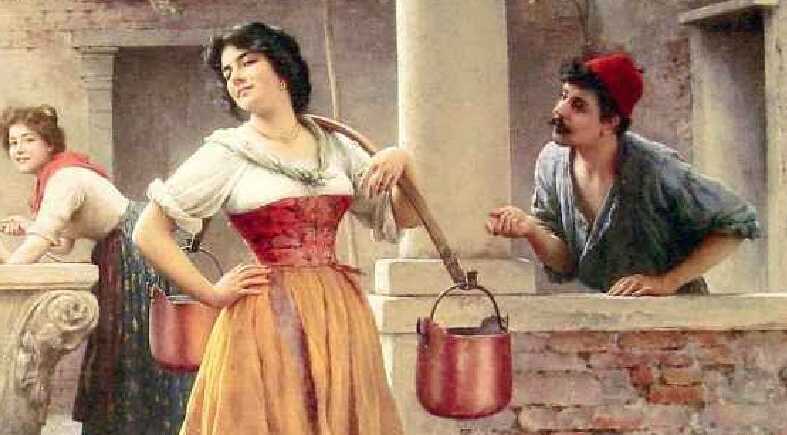
View Eugene de Blaas Painting Gallery
source: wikipedia
